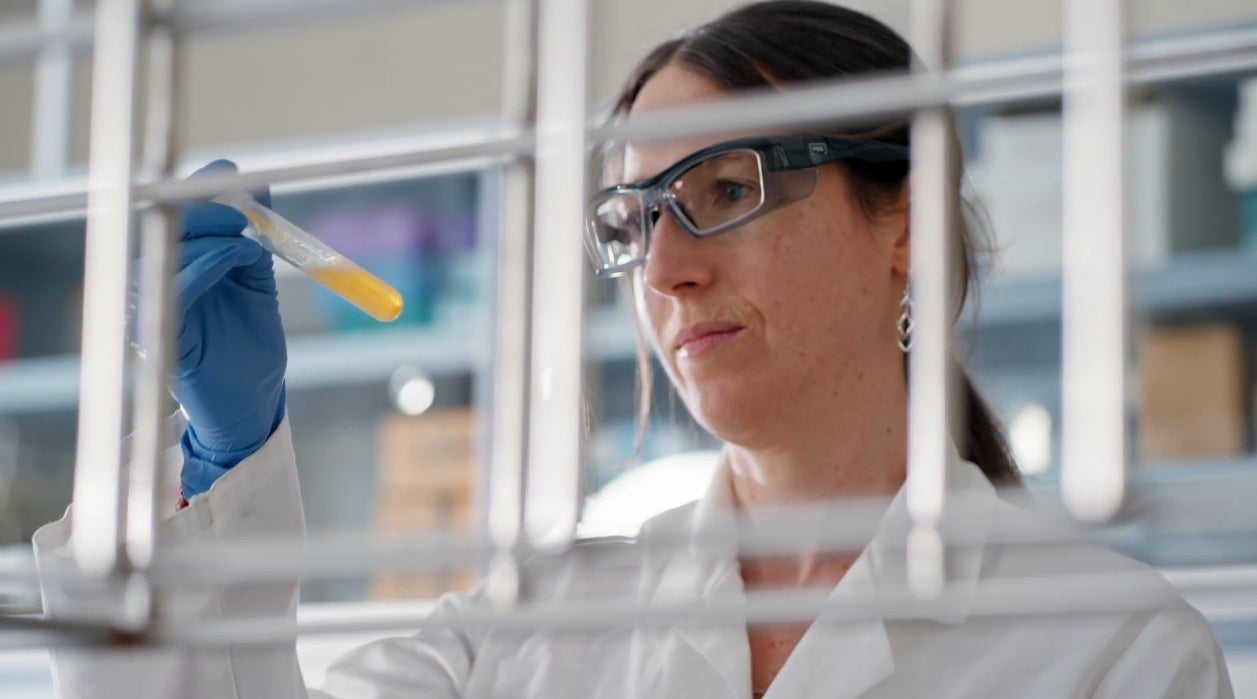

Raw Manuka Honey MGO 850+ - 500g
Our 850+ MGO Raw Mānuka Honey delivers bold, bright energy with serious Mānuka strength. Harvested from the untouched hills of New Zealand, wher...
View full details
 Scientists Dr. Michael Clearwater & Dr. Megan Grainger
Scientists Dr. Michael Clearwater & Dr. Megan Grainger
When it comes to Manuka honey, the magic is more than just taste; it’s science. And behind that science are two brilliant researchers from the University of Waikato in New Zealand: scientists, Dr. Megan Grainger, Senior Lecturer in Analytical Chemistry, and Dr. Michael Clearwater, Associate Professor in Plant Biology.
They’ve spent nearly two decades decoding what makes Manuka so special, and why it deserves a permanent spot in your wellness routine. Spoiler alert, it’s the MGO!
Our team recently had the chance to sit down with Dr. Grainger and Dr. Clearwater to learn more about their research firsthand, an incredible opportunity that deepened our connection to the science behind MGO.
Manuka honey comes from the nectar of the native New Zealand Leptospermum scoparium plant. Under the microscope, the flowers are busy little factories, producing a compound called dihydroxyacetone (DHA) in the nectar. When bees collect that nectar and turn it into honey, DHA naturally transforms into methylglyoxal (MGO), the powerhouse compound behind Manuka’s antibacterial strength.
“MGO is where the magic in Manuka happens,” says scientist, Dr. Grainger.
“And it’s only found in Manuka honey.”

Manuka honey contains more than 2,300 compounds, compared to just 90 in common clover honey. These include antioxidants, enzymes, and polyphenols that support everything from immune health to skin repair.
“It just keeps giving,” says Dr. Grainger.
“It’s antibacterial, antioxidant, antifungal, and antiviral, and there’s still so much to learn.”
Testing for authentic Manuka is a strict process. Before a jar earns the title “New Zealand Manuka Honey,” scientists test for four unique compounds and trace DNA from the Manuka tree to confirm its origin. This ensures every spoonful delivers what nature, and science, intended.
And the MGO number on the jar? That tells you how much methylglyoxal is in it.
MGO 50+ = great for daily wellness
MGO 850+ or 1100+ = ideal for seasonal sniffles and first-aid kits

Dr. Clearwater’s research highlights the way Manuka trees grow and produce nectar under different environmental conditions, helping refine how and when bees gather the most potent nectar.
"Every jar of Manuka honey reflects the health of the plant it came from. That’s what makes it so unique, and why it can’t be replicated anywhere else,” says scientist, Dr. Mike Clearwater, Associate Professor of Plant Biology.
Manuka honey is now used in hospitals worldwide for wound care, burns, and even in veterinary medicine. But at home? It’s as simple as adding a spoonful to tea or taking it straight.
Next time you dip into your jar of Wedderspoon Manuka, know this: behind the sweetness is a scientific legacy, rooted in nature, nurtured by bees, and brought to life by people who genuinely love what they do.


Our 850+ MGO Raw Mānuka Honey delivers bold, bright energy with serious Mānuka strength. Harvested from the untouched hills of New Zealand, wher...
View full details

The first organically certified Manuka Honey (in the U.S.)! In the remote, pristine landscape of New Zealand's South Island, honeybees are hard ...
View full details

Made exclusively by bees that feast on the nectar of New Zealand’s wild Manuka flowers, our raw Manuka honey is one of Mother Earth’s rarest gifts....
View full details

Our Organic Mānuka Honey Drops are made to bring comforting relief when life gets scratchy. Crafted in small batches in New Zealand, they combine g...
View full details

These honey pops are a delicious, feel-good treat made for the whole family. Crafted with Organic Mānuka Honey and Vitamin C, they’re free from art...
View full details
 Sold out
Sold out
Try all three types of our delicious Wedderspoon Manuka Honey Drops, which are all organic-certified, gluten-free, dairy-free, nut-free, and GMO-fr...
View full details